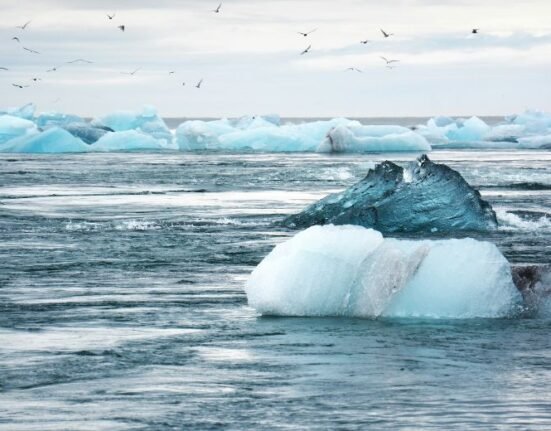HQ Team
April 15,2024:Adding to the climate change worries is the fear Vibrio vulnificus, commonly known as flesh-eating bacteria, is expanding its territory from the warm waters to the colder climes.
Scientists say that flesh-eating bacteria, normally found in the warm waters of the U.S. Gulf Coast is now moving to the Northeastern states in the US. Infections are now cropping up with increasing frequency in states like Connecticut, New York, and North Carolina, a phenomenon attributed to the bacteria’s migration northward at a rate of approximately 30 miles per year, as reported by Scienceline.
Elizabeth Archer, a marine biologist at the University of Essex said in a recent paper that vulnificus infections in the Northeast U.S. will leap from a baseline average of around 60 annual cases to up to 115 by 2040.
This news is especially worrisome for the elderly and people with compromised immune systems and liver problems. The Centers for Disease Control and Prevention (CDC) highlights that one in five individuals infected with V. vulnificus are likely to succumb to the illness, particularly vulnerable populations.
While very few people contract vulnificus infections, one in five who do are likely to die.
The rise in V. vulnificus infections has prompted health advisories from authorities, with New York City releasing a notable alert in September. According to data spanning from 1988 to 2018, infections along the Eastern United States have surged eightfold, marking a concerning trend.
Infectious disease spread
Climate change emerges as a key driver behind the bacteria’s proliferation, with warming oceans providing conducive environments for its survival and spread.
V. vulnificus is not an isolated case; other infectious diseases are also on the rise due to climate change.
According to a 2022 study, over 58 per cent (that is, 218 out of 375) of infectious diseases have been at some point aggravated by climatic hazards
The emergence of new diseases is incumbent on a lot of factors, including biological, ecological, environmental and social. But at the basic level, it is dependent on close interactions of pathogens with humans, peoples’ lowered immunity against a pathogen’s increased strength due to climate change.
According to a 2019 study in the journal PLOS, disease-carrying mosquitoes will reach 500 million more people by 2050 than they do today. In the US, incidences of tick-borne Lyme disease – a bacterial illness that can lead to serious joint and nervous system complications – have more than doubled in the past 30 years.
Numerous studies have shown that our oceans are warming and leading to higher number of storms and hurricanes. Toxic algae bloom in such weather and can affect the marine ecosystem. The blooms thrive as sewage and chemical run-off spews into water courses. Rising temperatures also stimulate these growths.
Heat waves also lead to mutations in viruses and pathogens. The heat leads to the host coming up with a stronger immune response and the pathogen trying to fight it by changing its genetic material.
California is witnessing a resurgence of Valley fever, attributed to extreme weather patterns associated with rising global temperatures. Similarly, experts warn of the potential spread of hepatitis E and other infectious diseases in the wake of climate-related shifts.
Precautions
In light of these developments, proactive measures are crucial to mitigate the risks posed by V. vulnificus. Individuals are advised to exercise caution when entering waters where the bacteria may be present, especially those with open wounds or recent piercings or tattoos. Cooking shellfish thoroughly before consumption, practicing proper hand hygiene after handling raw shellfish, and seeking immediate medical attention for any suspected infections are additional preventive steps recommended by the CDC.








